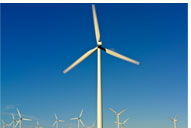




| CCRI-Net |
| Burning Coal for Green India |
(December 25, 2015) In December 2015 Paris Agreement is just concluded to direct the world towards future growth profiles, which may actually be decided in the next COP meetings. A lot of homework is to be done especially by developing countries till then. India’s INDCs for the period beyond 2020 were well articulated to show her commitment to climate change. India took a stand for climate justice. In this context I quote from the International Energy Agency (IEA) Energy Technology Perspectives 2010: BLUE map scenario, which had set the goal of halving global energy related CO2 emission by 2050 (compared to 2005 levels) by deployment of existing and new low carbon technologies, which include Carbon Capture & Storage (CCS). Global CCS Institute analysis predicts that coal with CCS is a mid-range technology in terms of cost when compared against a range of low emission technologies. In 2015 there are 22 large scale CCS projects in operation or under construction, of which three are in power and rest in other sectors. Nearly 44 projects are in various planning stages. Recently held 'Awareness and Capacity Building on Carbon Capture, Storage and Utilization (CCSU): Towards a Low Carbon Growth Strategy' in July 2015 by Climate Change Research Institute in New Delhi had a focus on CCSU as an option for CO2 removal processes in energy intensive industry. How fertilizers, steel, aluminum and power industries have directed their CO2 capture & mitigation efforts and what research is being pursued in our laboratories were discussed as hot topics. For India, CCS can be replaced with CCSU i.e. Carbon Capture, Storage & Utilization (CCSU) to avoid all underlying risks involved in storage and to make the emission reduction affordable. Should CCSU be recognized as an important component of climate change agenda Post 2020? – we present arguments in favour and against as below. Energy penalty for CCS adoption is high - can industry absorb it? One of the severest criticisms against CCS is its high energy penalty. In Pre-combustion separation, the penalty can be 9 point percentage and in post combustion it is almost 12 point percentage. For an average efficiency of a power plant of say 35%, it gets translated to significant loss to power producer. A ray of hope is oxy fuel combustion, in which fuel is burnt in pure oxygen which in turn produces entirely CO2 and there is no need of separating CO2 from other gases. Development of cost effective air separation into oxygen and recovery of value added fuels can make it a commercial proposition. Should newly built power plants be Capture Ready? There have been proposals to consider all future coal based power plants to be built capture ready, which requires not only additional space, provisions of water and other ancillaries, but also appropriate regulations. It is pointed out that capture ready is not just a technical issue but requires integration of new equipment, which is different for a range of different capture options. In addition to these, cost is another issue and unless new technologies develop on scale the answer is big NO. How CO2 storage will solve the problem? CO2 when disposed in the earth is treated as waste product. This can lead to several problems in terms of safety and re-emissions. How it can become an industrial good and utilized or recycled? Enhanced oil recovery as tertiary method by CO2 injection in depleted oil fields has been demonstrated on large scale. Coal mines are important source of coal bed methane (CBM) and injection of CO2 can lead to a commercial proposition for enhanced methane recovery. As many as 300 species of microbes are identified for producing diesel or fuel oil through CO2 sequestration in coal seams. Undoubtedly, long term storage for recovery of fuels from earth has a vast scope, but least studied. BECCS – Is it sustainable? Bio energy CCS has emerged as a cost –effective option for CO2 sequestration directly from flue gas with no separation required. For example, micro-algal mass cultures can use CO2 from power plant flue gases for production of biomass. Researches carried out at the South Delhi Campus of Delhi University suggests bio-mimetic processes in non-photosynthetic CO2 fixation which occurs widely in nature and enzymatic approach of CO2 utilization through Carbonic anhydrases (CAs) are environmentally safe. Research on enhanced CO2 utilization by photosynthesis rate and photosynthesizing surface, i.e., leaf area per plant and leaf area index, by 30-40% and 25-34% respectively, at Jawaharlal Nehru University have shown promise. Studies carried out at ICRISAT and others have identified important role of soils and forest management in mitigating the effects of atmospheric CO2 in the form of SIC (pedogenic carbon) and its subsequent importance in enhancing SOC (soil organic carbon) in the Tropics can act as a potential medium for CCS. Many practical challenges need to be addressed to make BECCS sustainable. Why CCSU ? – making it cost-effective Agreed that application of current CCSU technology may enhance the cost of electricity by almost 50%, in India current thrust to renewable sources of energy such as solar, wind and hydro-electricity is certainly commendable. The issue in favour of CCSU is that while renewable sources are intermittent, cost advantage for CCSU comes from higher rate of coal capacity utilization. Industry has evinced lot of interest regarding developments in CCU and is closely watching global technology developments. In contrast to global developments, CCSU research in our institutions is in infancy stage. Knowledge sharing among various groups and collaborations with industry is necessary to develop different scalable pilot projects for future. We have set a target of one billion tons of coal production by 2020. Energy scenarios indicate that fossil fuel capacity will still be 500 GW in 2030. With 61% of current installed capacity based on coal, can we afford to ignore CCU? Besides power sector, manufacturing industry, big or small will have no option, but to take action towards low carbon growth and focus on developing ways for CO2 recycling. It is imperative for India to develop implementation plan for CCSU to achieve 2.5 to 3 billion tons of additional carbon sinks during 2021-2030 to fulfill our goals towards a low carbon future. We need to have national targets to promote clean coal technologies and for incentivizing Industry to participate in the technology development. A new model for CO2 mitigation would have to be carved for growing sustainably. |
